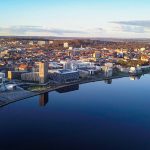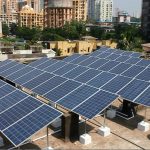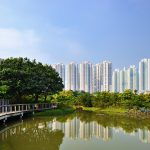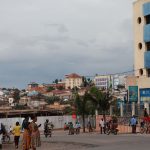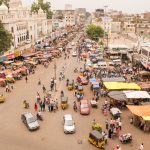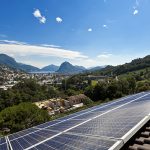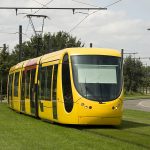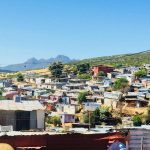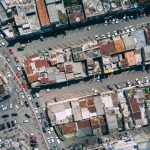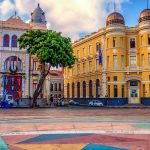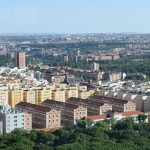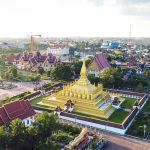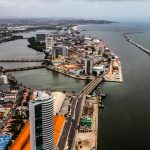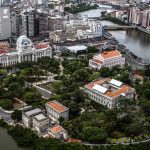Urban-LEDS II City in Focus Series
In focus...
- May 2020 - Aalborg, Denmark | Energy Transition
- June 2020 - Budapest, Hungary | Urban Mobility Transformation
- September 2020 - uMhlathuze, South Africa | Proactive Leadership to combat Climate Change
- November 2020 - Recife, Brazil | Energy Transition
- March 2021- Bratislava, Slovakia | Climate Adaptation Strategies
- June 2021- Rubavu, Rwanda | Flood Risk Management

Living the affordable energy transition dream
How Aalborg is advancing to become fossil fuel free by 2050
As modern societies we need energy for almost all aspects of our daily lives. Be it for transportation, manufacturing, charging our phones or illuminating and heating our homes, our demand for energy is ever growing. And so is the challenge to cut emissions from energy consumption. Thus, a successful energy transition not only has the potential to reshape geopolitical coordinate systems and the global economy, but is a priority area for Urban-LEDS cities to accelerate their low emission development.
When looking for ambitious examples of redesigning local energy supply systems, city planners need to look no further than the Danish municipality of Aalborg. Aiming to become 100% fossil fuel free by 2050, Aalborg’s ~220,000 citizens are no strangers to a set of ambitious initiatives. Below, we will explore some of the key aspects that are enabling Denmark’s third largest municipality to transition towards a carbon free future!
The Danish Example – (District) energy efficiency first
In a policy area as closely interlinked as energy, the national regulations and policies in place are no small fee for what ambition, scope and resources are needed to decarbonise local energy supply. As internationally recognised frontrunner of a green energy transition, known in Denmark as “grønne omstilling”, Denmark has demonstrated high continuity of national energy objectives and consent across governments in recent years. With a national objective to become fossil free by 2050, national ambitions have also been setting the scene for Aalborg’s local energy transition.
Reflecting national energy policy trends, Aalborg has been moving its strategic energy and heat planning forward already since the late 1980s, with a focus on district thermal network solutions. As a result, the extensive district network is now covering around 80 % of the municipalities’ heat demand. By 2050, networks are even set to cover up to 85-90% of net heat demand. Providing for flexibility in integrating volatile renewable sources, the thermal networks are an important backbone of the city’s energy action plan (2011-2030) and its ‘Energi Vision 2050’. As such, a mix of renewable heat and cold sources, including local biomass, wind, solar, heat pumps, waste and geothermal heat, as well as an envisaged total of 40-50% in energy savings is foreseen to bring down emissions from the network in the future. Aalborg network companies are thus required to increase energy savings by approximately 2% in supply annually. While the costs of the conversion are expected to stay in line with those of the current system, additional investments are foreseen to go into energy conservation and increasing efficiency in coming years.
All on board for the green transition
For a fossil free Aalborg 2050, the municipality approaches and promotes its energy transition as an integral part of a wider Sustainability Strategy. Already back in 1994 the city approved the Aalborg Charter during the first Sustainable Cities and Towns conference, as its political framework for sustainable development. By that Aalborg not only prepared the ground for a variety of European movements, such as the Aalborg Commitments and the Sustainable Cities Platform, but also set a trend for its local transition. The current strategy was formulated in close consultation with citizens, civil society, educational institutions, business and industry, with the aim to make sustainability an accepted principle in private, professional and public life of Aalborg’s citizens.
The central point for Aalborg’s cooperation with business and citizens is the Centre for Green Transition created in 2013. The center is an umbrella organisation for sustainability projects and partnerships, supporting initiatives such as a Green Agents program and a Green Shops scheme to embed sustainability in daily life. For sustaining competitiveness in the transition, the city and its university are identifying and supporting green innovation projects amongst a growing network of local companies. Complementary, Aalborg’s citizens are encouraged to take an active part in the transition through regular household energy saving support campaigns, competitions for neighbourhood energy saving rates and the highly popular annual sustainability festival.
Its motivational and encompassing concept to support climate friendly behaviour in the public and private sector, and the longstanding, forward looking approach to energy planning, put the municipality on track for a fossil free energy system. The example of Aalborg shows that even though change does not happen overnight, ambitious agenda setting, and sustainability as a principle approach in city planning, have the ability to transform the operation of an entire city and to turn the carbon free vision into a feasible reality.
For further details and reading consult our sources:
More on Aalborg and its energy transition, energy strategy and sustainability initiatives
State of Green, City of Aalborg: https://stateofgreen.com/en/partners/city-of-aalborg-helps-develop-concepts-of-sustainable-cities/
State of Green, Center for Energy Transition: https://stateofgreen.com/en/partners/city-of-aalborg-helps-develop-concepts-of-sustainable-cities/solutions/center-for-green-transition/
State of Green, District Heating and Cooling in Aalborg: https://stateofgreen.com/en/partners/city-of-aalborg-helps-develop-concepts-of-sustainable-cities/solutions/energy-efficient-heating-and-cooling/
Invest in Aalborg, Denmark’s most energetic city: http://investinaalborg.dk/wp-content/uploads/2018/11/Energy-white-paper.pdf
Aalborg Kommune, Energistrategi for Aalborg Kommune frem til 2030: https://www.aalborg.dk/media/4021849/energistrategi_for_aalborg_kommune_frem_til_2030_-_endelig_udgave__skrivebeskyttet_-1.pdf
Aalborg Kommune, Climate strategy 2012-2015 Mitigation: https://mycovenant.eumayors.eu/docs/seap/20581_1412589503.pdf
HotMaps project, Aalborg profile: https://www.hotmaps-project.eu/aalborg/Energy Cities
More on Danish and international to local energy policy
Agora Energiewende, Snapshot of the Danish Energy Transition (2015): https://www.agora-energiewende.de/fileadmin2/Projekte/2015/integration-variabler-erneuerbarer-energien-daenemark/Agora_Snapshot_of_the_Danish_Energy_Transition_WEB.pdf
Energy Cities, Cities heading towards 100% renewable energy (2016): https://energy-cities.eu/wp-content/uploads/2018/11/publi_100pourcent_final-web_en.pdf
Energy Cities, The Energy Transition Chronicles (2016): https://energy-cities.eu/wp-content/uploads/2019/01/chroniqueste_complet_en.pdf
Foresight. Climate & Energy, The path to emissions-free district heating in Denmark: https://foresightdk.com/the-path-to-emissions-free-district-heating-in-denmark/
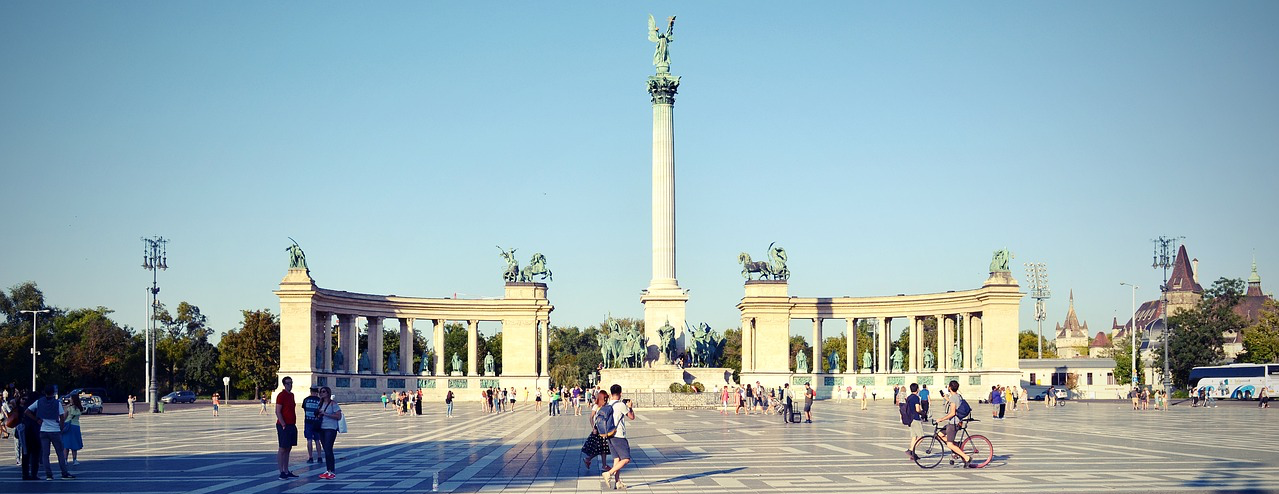
Budapest on the move – A sustainable urban mobility transformation
Crowded streets, the sound of accelerating engines in a stop and go traffic, the scent of gasoline and rubber in a blur of lights, smog and metal. A classic rush hour scenario stretching from the suburbs to city centres around the globe. With cities having temporarily reorganised their city centres with pop up biking lanes and car-free streets due to the COVID-19 crisis, many citizens have claimed the new space for walking and cycling. The measures provided many urban dwellers with their first glimpse on what urban mobility in the greener and more resilient cities of the future could look like.
A scenario Urban-LEDS city Budapest has long been working to realise by advancing its sustainable mobility plan. Reason enough to take a look at some of Budapest’s actions to square the minimum pollution – maximum mobility circle connecting its 1.7 million citizens across a 525 km² territory.
Pursuing excellence
Like for many cities, Budapest’s efforts take root in the need to reduce emissions from road transport, while at the same time expanding its public transport system – currently composed of four metro lines, five railways, 33 tramlines and 279 bus lines – to accommodate the needs of a growing population. A process of anticipating the mobility needs of generations to come, while planning, designing, constructing and interconnecting different means of (public) transport integratively and effectively in the now. A process of such complexity and impact on the daily operations and sustainability of the city, that it prompted Budapest officials to create the BKK, a specialised centre to drive the process. Brought to life as a centre of excellence for transport in 2011, the BKK addresses key aspects of urban mobility ever since.
As such the BKK was responsible for the development of a new Mobility Plan to modernise transportation system in line with the guidelines issued by the European Commission for developing Sustainable Urban Mobility Plans (SUMP) and the city’s climate resilience and adaptation plan. The BKK included more than 200 institutions in the preparation of the plan to analyse key mobility problems in the city, including a one-year public consultation process. In promoting more connections, more attractive, environmentally friendly, comfortable vehicles and technologies, better service, and more efficient governance, regulations and cooperation, the plan is to deliver on ensuring a liveable urban development with a safe, reliable and dynamic transportation system. For this purpose, the SUMP has been integrated into the Budapest 2030 Development plan and echoes the targets of Hungary’s National Energy and Climate Plan (NECP) requiring the country to reduce emissions by 40% (to 1990 levels) until 2030.
Hungary: an active mobility exception
Thereby Hungary can build on a remarkably high number of citizens already taking up active mobility solutions. According to Eurobarometer and the European Cyclist Federation, around 22% of the population opt for cycling frequently to get to work. Only the Dutch and Danes are cycling more on a regular basis in Europe. Budapest is embracing and promoting this potential further via campaigns like “I bike Budapest” and its longstanding participation in European wide initiatives such as European Mobility Week. The city’s 200 km of bike routes are making it one of the most bike-friendly cities in Europe, tying in well with its emission reduction targets.
What’s next?
Budapest demonstrated yet again in 2019 that it is advancing its vision of a green future, when the newly elected mayor, Gergely Karácsony, declared the state of climate emergency for the city. Yet, like many cities, Budapest experienced unprecedented shifts in mobility trends during the COVID-19 lock down with public transport numbers dropping to 10%. For Budapest city planners, the lockdown reconfirmed the importance of taking an integrated, holistic approach that is promoting several parallel transport options and equipping citizens with the knowledge to make conscious mobility choices. Before presenting its carbon-neutrality strategy in 2021, Budapest is set to finalise its integrated (access-based) urban transport strategy and action plan still this year. Budapest’s success in turning its visions of a modernised, sustainable transportation system into reality is building on the cities commitment, as well as its willingness to go beyond the status quo via European projects such as MaaS4EU, SUMPs-UP and Dynaxibility4CE, while also working on a strong and broad public support for its measures.
A fresh breeze brushing through the green and spacious sideways filled with pedestrians, cyclers and scooters hurrying to catch the tram rattling by. A vision that many cities like Budapest are turning into a reality already.
References for further reading:
https://sumps-up.eu/the-project/
https://www.energypoverty.eu/news/fuel-poverty-hungary
https://iclei-europe.org/news/?c=search&uid=hE6BFl6Y
https://ecf.com/users/anonymous/trusted-content/cycling-governance-hungary-miklós-berencsi
http://www.sump-challenges.eu/content/bkk-centre-budapest-transport
https://ec.europa.eu/energy/sites/ener/files/documents/ec_courtesy_translation_hu_necp.pdf
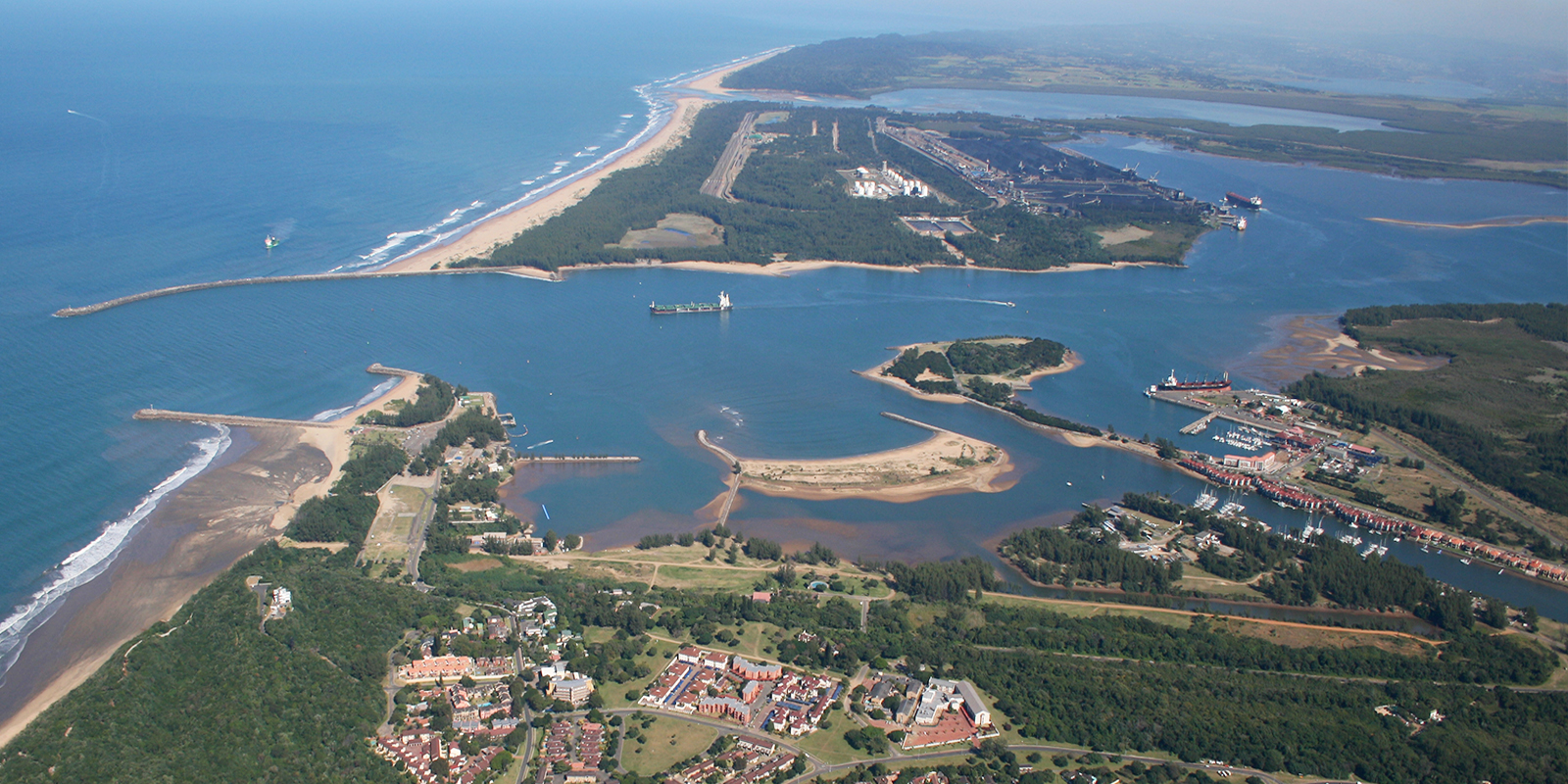
City of uMhlathuze: An Urban-LEDS II city proactively leading to combat climate change
Renowned for being an economic powerhouse in South Africa, the City of uMhlathuze is home to the biggest harbour on the continent, the largest coal export facility in the world, and many heavy industries, such as aluminium smelting. Over the years, the City of uMhlathuze has had an influx of people migrating from the rural areas in search of livelihood and education opportunities. This has increased the pressure on the City’s infrastructure, the built environment and exacerbated high energy consumption. Due to the nature of the industrial activity, the City of uMhlathuze is considered one of the areas with the highest greenhouse gas (GHG) emissions in KZN, surpassing the City of eThekwini.
“Climate change has emerged as a cardinal pillar in local planning,” says Nontsundu Ndonga, Deputy Municipal Manager; City Development. “The City of uMhlathuze has heeded this call by acknowledging its impact at a local scale and has made concerted efforts to institutionalize mitigation and adaptation responses into service delivery functions of the City. Strategic policy initiatives such as the Integrated Urban Development Framework integrate climate change as a cornerstone theory of change to foster a risk-averse approach to budgeting, planning and climate proofing urban development.”
The Municipal Climate Change Action Plan is informed by a vulnerability assessment and incorporates priority and cross-cutting interventions as climate responses. The work is sanctioned by a core team, the “Green Team”, representing various departments across the municipality serving as a vehicle to mainstream climate action across the municipal functional departments. The institutionalization process has furthermore included civil society and partnerships with business. The core objective is to leave no one behind. This is even more prevalent in times of a health crisis, where issues of sustainability come to the fore. “The COVID 19 pandemic will no doubt alter the course of our developmental trajectory and, through our Economic Recovery Plan, growth and development must be cognizant of ecological parameters and reducing greenhouse emissions” says Ndonga. “Programs like Urban-LEDS II,” she says, “are a vehicle to frame our climate action responses and let us reflect on the importance of social partners in mobilizing an all-of-society approach to successfully implement our sustainability agenda.”
The City has also identified the need to proactively take a leading role by not only relying on external resources to address climate change, but to also mobilize the municipality’s own resources to carry out measures against climate change, such as compiling a GHG inventory and green building guidelines. These measures will support the City’s decision making process going forward.
Like many cities in South Africa, emissions from the City of uMhlathuze are predominately attributed to electricity consumption from stationary energy, notably the manufacturing and construction industry. This highlights the need to identify measures to be put in place by the municipality to reduce emissions in the specified sector. Although the municipality has no mandate over the manufacturing and construction sector’s energy usage, Council is the mandated authority for the approval of building plans for new buildings and the retrofitting of existing buildings. As such the municipality sees the green building guidelines as a stepping stone to reduce the emissions from the stationary energy sector in general.
Sectoral interventions in uMhlathuze’s Green Building Guideline
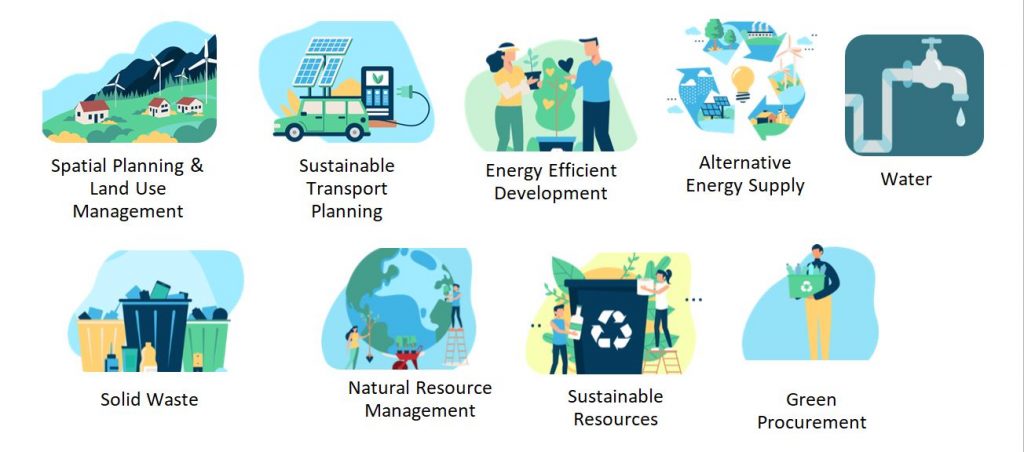
Going forward, the City of uMhlathuze sees strategic partnerships as imperative for the municipality for profiling, networks and access to programs and climate finance. As such, the municipality has embarked on programs with various partners in efforts to scale up responses to climate threats, with ICLEI’s Urban-LEDS II being one. The municipality’s involvement in the latter has also created opportunities for involvement in Smart Building Metering and the Training of Building Inspectors.
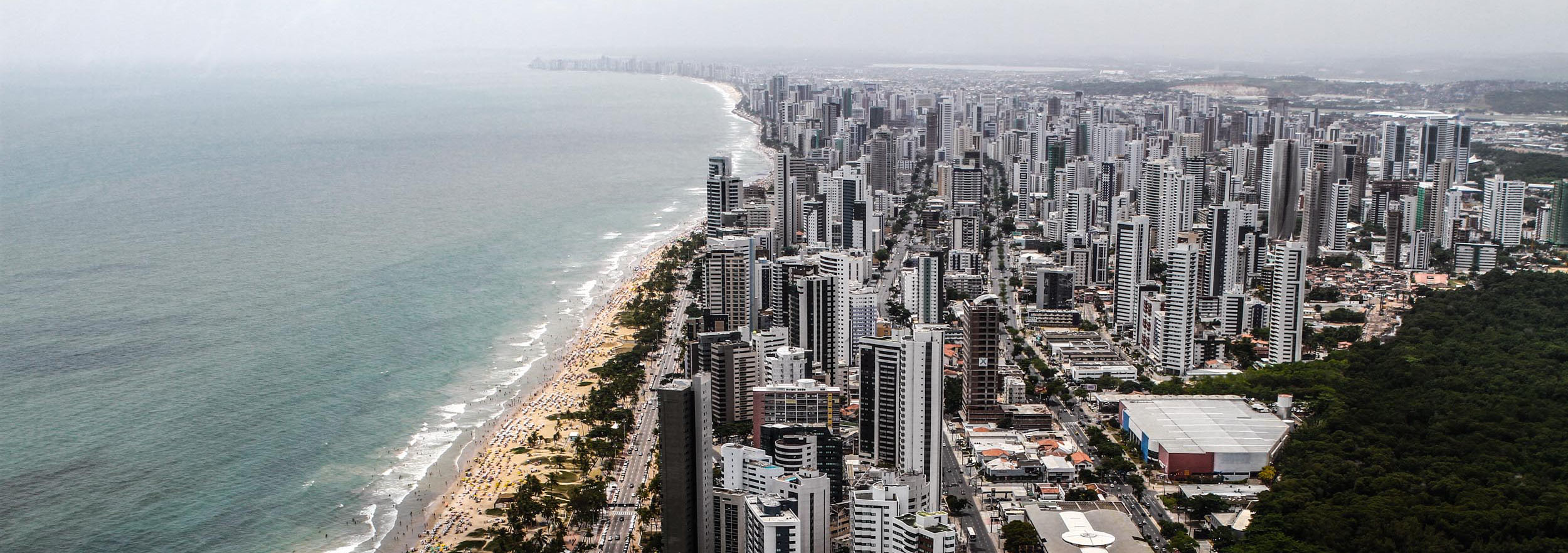
The intervention of Urban-LEDS in Recife, Brazil: An example of the fight against climate change
Partner in the Urban-LEDS project, the city works to create measures aiming the expansion of low-emission development strategies.
The city of Recife, in Brazil’s Northeastern region, is a seashore state capital, with it’s whole population living in urban areas. Its geographic and demographic characteristics have made the city as one of the most vulnerable to the impacts of climate change in the coming years because of sea level rise and increasing number of landslides.
Recife has been the model city of Urban-LEDS since the first phase of the project period, where the city has increased its installed capacity to create and expand several measures to make low-emission development as strategic as possible. With the support of ICLEI, Recife was the first Brazilian city to declare a climate emergency.
The initiatives that the city is implementing are aimed at decreasing emissions and increasing climate resilience involving energy efficiency (“Ilumina Recife”), the regeneration and expansion of urban parks (“Parque Rio Capibaribe”), and solar energy capture in public spaces. Besides, Recife is one of the four cities in South America LEDS Lab project as an ICLEI SAMS’ pioneer, focusing on providing technical support and training so that participating municipalities can develop financeable climate projects.
Since 2013 in Brazil, Urban-LEDS project supports cities to develop their “climate compliance”, a set of laws and studies that assist the municipality’ climate governance. The main studies that the city develops in that process is an inventory of greenhouse gas (GHG) emissions (most related to Mitigation); and a Climate Risk and Vulnerability Analysis (mostly related to Adaptation). Both help the city to build a meaningful Climate Action Plan (CAP), with the objective and target to reduce emissions. Recife has already consolidated its risk analysis and its GHG Emissions Inventory. With the review of their new Climate Action Plan the project is soon coming to an end. The first plan was made in 2016, at Urban-LEDS I.
The review kicked off in March 2020 and is planned to be finalized by December 2020. The CAP’s main objective is to achieve carbon neutrality by 2050, in alignment with the Paris Agreement. Recife’ Secretariat of Environment and Sustainability, Pelópidas Silveira Institute (ICPS), the GECLIMA (Executive Group on Sustainability and Climate Change), and other secretariats and members of civil society are involved in this process.
One of the meetings to include civil society’ perspective was prepared by ICLEI South America and supported by local movements including the city’s youth voices. This meeting has mobilized participants aged between 15 and 30 years old for a discussion about the question: “What is the most important highlight for a Climate Action Plan for your city?”. During the discussions young people defined proposals that could guide the actions to be added in the final document of the study, that will be validated and adapted after the review by ICLEI and the focal points of the cities.
Recife recognizes the importance of managing robust data to design and further implement effective climate action through its Climate Action Plan, as done by Fortaleza, Curitiba, Rio de Janeiro and Porto Alegre.

Bratislava: Weathering the Storm
With social life in many countries still largely in the grip of the COVID19 pandemic, resilience and adaptation has involuntarily become a frequently discussed concept in households across the globe, with people having been forced to adapt their lives drastically to the reality of a global pandemic.
Adaptation has been more commonly discussed in urban planning offices and city administrations, as a means to ease the impact of yet another crisis, the climate crisis, and the more frequent extreme weather conditions caused by it.
In Slovakia’s capital Bratislava adaptation to climate change has been a priority for much of the last two decades. Situated on both sides of the Danube River at the foot of the Little Carpathians Mountains, the city has become increasingly prone to flooding events in recent years. With one of the youngest populations in Europe, heat and flooding has become one of the greatest vulnerabilities of city dwellers. As a consequence, Bratislava started to make adaptation a policy priority locally and internationally in its Social and Economic Plan of 2008, the binding Strategy of Adaptation to Adverse Impacts of Climate Change on the territory of Bratislava from 2014 with a linked Action Plan, while also signing on to the Covenant of Mayors (in 2012) and Mayors Adapt (in 2014).
In practice Bratislava officials first started conducting a series of vulnerability assessments of its different Boroughs to different climate change hazards in 2008 and 2013 to prepare the city better for future extreme weather events. This included an initial spatial analysis of vulnerable population groups and areas, as well as of critical infrastructure, with the aim to streamline adaptation across policies and planning and to provide a framework for monitoring and evaluation of the adaptation process. Between 2007 and 2010, a new system of the Danube flood protection was developed to better protect citizens in the case of a momentous flood (1000 year event).
With local flooding problems persisting, especially in the northeast of Bratislava, forming part of the Small Carpathians, the city has joined a number of different EU initiatives and is working closely with like-minded European cities. In the practice-based EU-funded research project RESIN for example, the city set out to develop practical and applicable tools to support cities in designing and implementing climate adaptation strategies for their local contexts through co-creation and knowledge brokerage between cities and researchers.
In projects such as PERFECT or LIFE DELIVER, Bratislava is engaging in identifying and analysing good practices in multi-use of green infrastructure, as well as introducing adaptation and mitigation measures in residential areas to boost health and improve property protection and biodiversity. With its Blue “Tilgnerka” initiative the city is furthermore promoting rainwater harvesting, recycling and reuse by bringing on board local communities, including children to increase environmental awareness. As a side effect, the expansion of green infrastructure and the rising number of green areas and trees in the city are not only absorbing water from flooding and cooling down neighbourhoods, but are also recreational islands for citizens with revitalising effects on many public spaces already.
The listed projects are only a small part of the climate adaptation efforts of the city to prevent flooding, fight the heat island effects within its jurisdiction and to renovate, refurbish and secure its old, historic building stock from climate change impacts. By having joined the Urban-LEDS II project, Bratislava has furthermore demonstrated its willingness to look beyond what’s known and to share its significant knowledge with peers from across the world to increase resilience of urban centres to climate change impacts. In November 2020 the city reaped the benefits of its longstanding and through investigation into climate change affected areas involving numerous institutions and international partners, when publishing its first Vulnerability Assessment Atlas outlining where Bratislava is vulnerable to the shifts in climate and how the city will address those.
For more on climate change adaptation, developing a risk and vulnerability, assessment and how nature-based solutions can be taken up for adaptation to increase resilience, have a look at ICLEI’s Adapting to climate change and enhancing resilience video series.
References for further reading:
- https://bratislava.sk/
- https://resin-cities.eu/fileadmin/user_upload/Cities/Bratislava/RESIN-D4.1__City_Assessment_Report_Bratislava_revised_Version2.pdf
- https://www.themayor.eu/en/bratislava-reveals-vulnerability-assessment-on-climate-change-threats-to-the-city
- https://www.researchgate.net/publication/338080997_Climate_Change_Impact_and_Vulnerability_Analysis_in_the_City_of_Bratislava_Application_and_Lessons_Learned
- https://www.interregeurope.eu/perfect/
- https://ec.europa.eu/environment/life/project/Projects/index.cfm?fuseaction=search.dspPage&n_proj_id=6707
- https://oppla.eu/casestudy/19033
- https://eeagrants.org/archive/2009-2014/projects/SK02-0042
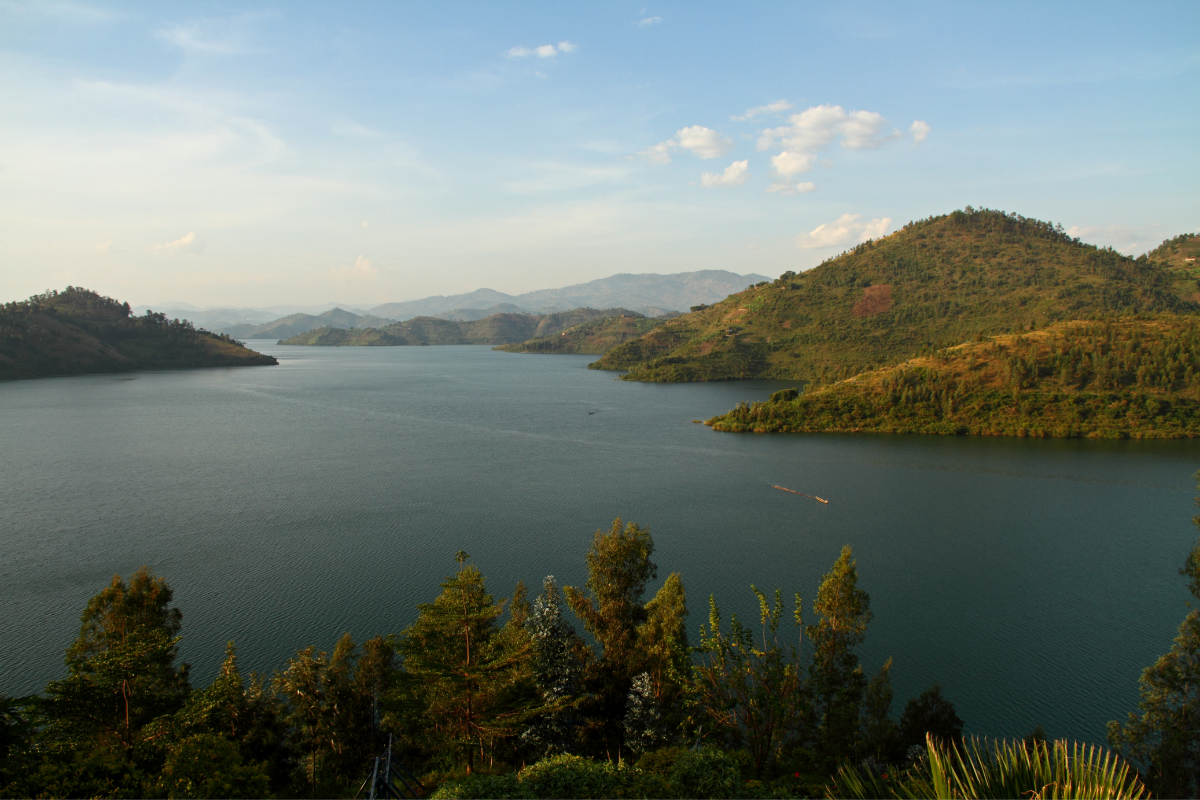
Rubavu, Rwanda: Flood Risk Management Strategies
Rubavu aspires to be a business and tourism hub in Rwanda taking advantage of its geographical location on the northern shores of Lake Kivu and near the Volcanoes National Park, both major tourist destinations in Rwanda. It is one of the fastest urbanising districts among the seven districts in the Western Province and operates as a major transit point for goods to and from Goma in the Democratic Republic of Congo. Because of this, Rubavu city is acknowledged to be the ‘International Gateway City and Tourism’. However, the district is not without challenges. The heavy rainfall and hilly topography of Rwanda render the country prone to floods. These issues are more pronounced in the Western Province where Rubavu is located, and also in the Southern Province where the population affected by floods is most concentrated.
Rubavu was identified as one of the subnational governments within Rwanda to benefit from the Urban Low Emission Development Strategy (Urban-LEDS) Phase II project, an initiative assisting local governments to implement integrated low emission and resilient development by offering guidance, tools, and technical assistance; mobilizing cities to commit to the Global Covenant of Mayors for Climate and Energy (GCoM); exploring access to financing; and supporting multilevel governance. One of the outputs included the development of a Climate Risk and Vulnerability Assessment (CRVA) with input from local stakeholders to supplement the district’s disaster mitigation strategies. Rubavu’s District Development Strategy (DDS) identifies river flood as one of its major climate risks, and according to the CRVA, the district stakeholders foresee that the frequency and intensity of river floods are likely to increase in the short term, and tourism, one of its key drivers of development, to be most vulnerable sector to floods.
Challenges and opportunities of the Sebeya-Karambo catchment
In Rubavu District, over the past few years, the most significant flood-related challenges have been recorded in the Sebeya-Karambo catchment, including human fatalities and infrastructural damages. The Sebeya River originates in the mountain ridge of the Congo-Nile divide and flows for 48km through the catchment. The river combines valuable natural ecosystems, such as Lake Kivu and Gishwati National Park, with densely populated areas along the national road from Musanze to Rubavu, and further to the Democratic Republic of the Congo. The catchment and the lake are the main sources of water for the district, providing hydropower and water abstraction for households, farms and industry in the fast urbanizing district capital of the Rubavu and surrounding valley. These bodies of water guarantee energy security from a renewable source and ensure enough water is available for critical services and activities. However, flooding regularly occurs in the river and poses socio-economic challenges, causing landslides, soil erosion, crop losses, infrastructure and residential property damage, disruption of hydropower and drinking water intakes, and human injuries and deaths.
To mitigate this, the Rwanda Water Resources Board (RWB), with support from The Embassy of the Kingdom of the Netherlands, in cooperation with Rubavu districts, has designed the Sebeya Catchment Management Plan (2018-2024). The plan aims to effectively manage land, water, and related natural resources that contribute to sustainable socio-economic development and improved livelihoods. It takes into consideration environmental flow, downstream water demands, and resilience to climate change, and that minimises water-related disasters.
To reduce the vulnerability to flood hazards, a number of measures are proposed:
- protect the rural roadsides with drainage of excess water,
- relocate households from high-risk zones to IDP/green model villages,
- increase rainwater harvesting facilities to residential houses and public buildings,
- demarcate and protect buffer zones along rivers and wetlands,
- construct flood infrastructures like dykes, retention dams and retaining walls and construct diversion channel(s) from the entrance of Mahoko trade centre to reduce flow rate in the main riverbed and river check dams.
Aligned with the plan’s specific objective to implement the landscape restoration measures in priority sub-catchments, which are Karambo with Sebeya downstream and Sebeya upstream, minimize floods and landslides, since 2019, RWB initiated the designing of detailed flood control measures in the Mahoko area and study to implement flood mitigation measures and protection structures in Sebeya, Karambo, and Bukeri rivers. Various structural measures are being proposed to mitigate flood risks and to optimize benefits from flood plains area by storing part of the flood volume and have it released later, at a lower flowrate.
“Protecting life and property is the main focus of the implemented flood control measures around Sebeya River, as also one of the mandates of the Rwanda Water Resources Board, and we are proud that Sebeya Landscape Restoration Protection Project is producing results at different flood hotspot in Mahoko center as well as downstream parts of Sebeya. Also, Sebeya flood model was developed to indicate the likely flood extent and depth that could be used to plan the reduction of flooding in communities. The RWB has also taken a comprehensive approach that includes catchment restoration and management from the upper part of Sebeya catchment where different interventions are implemented like gully treatment, progressive terraces and agroforestry, radical terraces and agroforestry, riverbank protection, etc. to restore, protect and reduce degradation of the catchment.
In addition to the benefits of the implemented measures, [they] are being welcomed by the Rubavu District as a good approach for management of floods, protection of land from soil loss, and reduction of disaster losses in a wide variety of ways, such as acting as a model for Project Impact communities, supporting local communities in soil protection activities, emphasizing stronger catchment management plans as a collective and providing good planning by taking into consideration all-hazards planning.”
Bugingo Davis, Flood Management and Water Storage Development Division Manager of Rwanda Water Resources Board
The district of Rubavu is aware that the impact of climate change could intensify the hydrological cycle leading to greater magnitude and frequency of extreme flood events and for environmental degradation to increase vulnerability to climate hazards. Accordingly, Rubavu District’s DDS is guided by overarching green growth and climate-resilient development objectives and will implement multiple strategic interventions to protect the environment and mitigate the effects of climate change.
”Rubavu District is one of six secondary cities after Kigali, the Capital City of Rwanda and plans to continue conserving the environment in different sectors such as agriculture, housing, industrial and other activities following the master plan efforts made in collaboration with Rwanda Water and Forests Authority (RWFA) to cope with the flooding of the Sebeya River, where the activities are still underway, are so far productive as the river is no longer damaging the population’s properties as it used to.
That is the result of 1,023 hectares of constructed radical terraces and 1,846 hectares of progressive terraces, the afforestation of the area and planting bamboo on the banks of Sebeya River, which led to the reduction of floods to a satisfactory level. We urge our people to continue to preserve the various activities that are being achieved in the context of the Sebeya Basin and the environment as a whole, so that it continues to help us to have a better life and a suitable city for its residents and travelers.’’
Habyarimana Gilbert, The Mayor of Rubavu District



